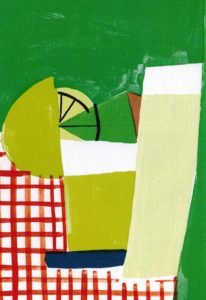The flood of popular instructional guides within the cocktail culture bifurcates into two noticeably asymmetrical streams. The first, substantially dominant, is characterized by an almost tiresomely uniform pattern: brief mentions of tools (typically without detailed usage instructions), concise descriptions of key ingredients, a few words on cocktail optics, and then a list of recipes supplemented by images, often leaving readers perplexed as they struggle to replicate the drinks depicted. The second stream, in a nutshell, introduces “guides differently.” ‘The Art of the Cocktail’ adorned with a brief introduction by Salvatore Calabrese is a prime example.
At first glance, it seems clear who this book is for: the home enthusiast. Immediately following Salvatore’s emotive depiction of a bartender using a glass as a canvas and ingredients as paints to create a “liquid image of a cocktail,” the reader navigates through the specification of volumes used (spotting the difference between a jigger in the UK and the US and learning how many “mls” fit into a spoon) and, notably, gets a chance to embrace ‘The Ideal Order,’ an eight-step process of creating a mixed drink starting from chilling the glass and culminating in its service.
The enumeration of mixing techniques, glasses, and a concise list of bar jargon precedes the pivotal section of the publication, which contradicts its title. In my opinion, it’s not a book about the “art of the cocktail” but rather about the “art and cocktail.” Charlotte Trounce, the illustrator and designer, whose name curiously doesn’t grace the handbook’s cover explicitly, contributes by defining the peculiarities of a specific artist’s creations and reflecting them through impressive illustrations. Her effort also inspires the creation of a recipe for a mixed drink, which, interestingly, is also left unnamed, mirroring these peculiarities. And at this moment, the amateur handbook morphs into a valuable information source for professionals.
Take, for instance, the Dalí Wallbanger. The story of a fictional surfer and a vodka-based cocktail named after him is widely known. However, by adding a pinch of cayenne pepper, the recipe ventures into the orbit of one of surrealism’s fathers; Salvador Dalí formulated the Casanova Cocktail in his book Les Dîners de Gala, where this very pepper plays a significant role. Seizing the opportunity to share this tidbit while serving a standard drink to a guest is a conversation I wouldn’t miss.






